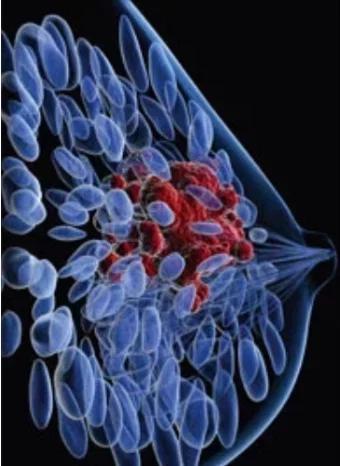Article
Approval Sought for Plinabulin Plus G-CSF in United States and China for Prevention of CIN
Author(s):
A new drug application has been submitted to the FDA and the China National Medical Products Administration for the use of plinabulin plus granulocyte colony-stimulating factor for the prevention of chemotherapy-induced neutropenia.

A new drug application (NDA) has been submitted to the FDA and the China National Medical Products Administration (NMPA) for the use of plinabulin plus granulocyte colony-stimulating factor (G-CSF) for the prevention of chemotherapy-induced neutropenia (CIN).1
The application is based on findings from the phase 3 PROTECTIVE-2 trial (Study 106; NCT03294577), which showed that the combination of plinabulin and pegfilgrastim (Neulasta) was 53% more effective in reducing CIN incidence than pegfilgrastim alone in patients who were undergoing chemotherapy.2
The incidence of profound neutropenia was 21.6% with the combination vs 46.4% with pegfilgrastim alone (P = .0001) in patients with breast cancer who are undergoing a chemotherapy regimen comprised of docetaxel, doxorubicin, and cyclophosphamide (TAC). The combination also resulted in a 41% reduction in the risk of febrile neutropenia vs pegfilgrastim alone, based on a reduction of profound neutropenia.
Moreover, a 50% reduction in the mean duration of profound neutropenia was also reported with plinabulin/pegfilgrastim, at 0.3 days vs 0.6 days with single-agent pegfilgrastim (P = .0004).
“The NDA submission is the culmination of years of research to prove that plinabulin can improve the long-established standard of care and address an unmet medical need to further alleviate the risk burden of CIN for patients receiving chemotherapy,” Lan Huang, PhD, co-founder, chief executive officer, and chairman of BeyondSpring, stated in a press release. “With CIN responsible for potentially delaying treatment and causing life-threatening infections, we hope that receiving the improved care represented by the plinabulin and G-CSF combination will allow patients to better tolerate chemotherapy and potentially see increased treatment success rates.”
CIN continues to be a serious unmet need. Since 1991, the use of G-CSF has served as the standard of care for the treatment or prevention of this effect with the approval of filgrastim (Neupogen). The main benefit with G-CSF is reaped in week 2 following chemotherapy. The first week after chemotherapy is known to be the “neutropenia vulnerability gap” where more than 75% of CIN-associated complications are known to occur; these complications can include febrile neutropenia, infection, hospitalization, and even death.
Plinabulin is the first agent seeking FDA approval that may potentially be able to fill the gap, according to BeyondSpring, in that it can work in week 1 to prevent the onset and progression of CIN. Investigators have hypothesized that the addition of plinabulin to G-CSF could potentially maximize the protection of patients for the full cycle of chemotherapy; this was confirmed in PROTECTIVE-2.
The double-blind, active-controlled, international, phase 3 trial enrolled a total of 221 patients who were randomized to receive TAC (day 1 dose) in a 21-day cycle plus 40 mg of plinabulin (day 1 dose) and 6 mg of pegfilgrastim (day 2 dose; n = 11) vs a single 6-mg dose of pegfilgrastim (day 2 dose; n = 110).
Previous data indicated that the addition of plinabulin also improved duration of severe neutropenia (DSN) cycle 1 on days 1 through 8 (absolute neutrophil count [ANC] <0.5 x 109 cells/L; P = .0065), DSN cycle 1 (P = .03); mean ANC nadir cycle 1 (P = .0002), and duration of profound neutropenia cycle 1 (ANC <0.1 x 109 cells/L; P = .0004).3
Full data also indicated a statistically significant improvement in preventing grade 4 CIS in cycle 1 with the combination vs pegfilgrastim alone, at 31.5% and 13.6%, respectively (P = .0015). Key secondary end points were also met, including DSN cycle 1, days 1 to 8; DSN cycle 1, and mean ANC nadir cycle 1. A lower frequency of grade 4 toxicities was also reported with plinabulin/pegfilgrastim vs pegfilgrastim alone, at 58.6% and 80.0%, respectively.
In the phase 2 portion of the trial, the plinabulin regimen led to a reduction in CIN vs single-agent pegfilgrastim in those given TAC chemotherapy.4 Plinabulin/pegfilgrastim resulted in a 50% rate of grade 3 neutropenia vs 81% with pegfilgrastim alone (P <.05). Moreover, the plinabulin regimen also led to lower rates of grade 4 neutropenia than pegfilgrastim alone, at 38% vs 57%, respectively.
Participants who received the plinabulin combination were also found to experience less bone pain than those who received pegfilgrastim by itself. Six percent of patients in the investigative arm vs 95% of those in the control arm experienced bone pain for day 1 or longer (P <.001). Moreover, 0% and 33% of those in the investigative and control arms, respectively, experienced bone pain that persisted for 4 days or longer (P <.01).
References
- BeyondSpring announces submission of new drug application to US FDA and China NMPA for plinabulin and G-CSF combination for the prevention of chemotherapy-induced neutropenia (CIN). News release. BeyondSpring, Inc. March 31, 2021. Accessed April 1, 2021. https://bit.ly/39vpShF
- Blayney DW, Huang L, Mohanlal R. Superior and clinically meaningful protection against profound neutropenia with the plinabulin/pegfilgrastim (Plin/Peg) combination versus peg in breast cancer patients receiving TAC chemotherapy: phase 3 results from Protective-2 (BPI-2358-106). Presented at: 2020 San Antonio Breast Cancer Symposium; December 8-11, 2020; Virtual. Abstract PS13-53-01.
- BeyondSpring announces positive topline results from its PROTECTIVE-2 phase 3 registrational trial of plinabulin in combination with pegfilgrastim for prevention of chemotherapy-induced neutropenia. News release. BeyondSpring Therapeutics. November 16, 2020. Accessed April 1, 2021. https://bit.ly/35BVosZ
- BeyondSpring announces positive topline interim results from PROTECTIVE-2 (Study 106) phase 3 trial evaluating superiority of plinabulin in combination with Neulasta for chemotherapy-induced neutropenia prevention. News release. BeyondSpring Pharmaceuticals. June 15, 2020. Accessed April 1, 2021. https://bit.ly/3fval2d









